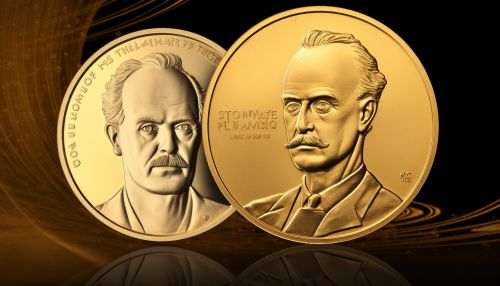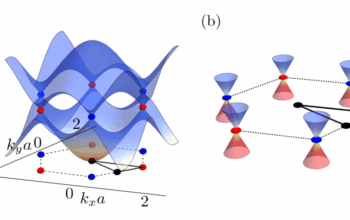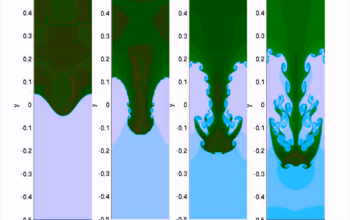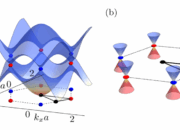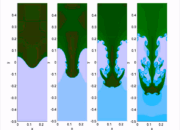The Dirac Medal, a prestigious accolade awarded by the Institute of Physics, signifies outstanding contributions to the realms of theoretical physics, specifically in quantum mechanics and atomic physics. Named after the eminent physicist Paul Dirac, known for his profound insights into quantum theory and the development of Dirac’s Equation, this medal honors those individuals whose work aligns with the transformative legacy Dirac established in the early to mid-twentieth century. This article endeavors to elucidate the impactful nature of the Dirac Medal, detailing its implications within the disciplinary confines of atomic physics, as well as the broader scientific community.
The inception of the Dirac Medal stems from a necessity to recognize those whose pioneering contributions resonate with quantum foundations and applications. Awarded biennially, the Dirac Medal does not merely signify a mere accolade; rather, it embodies a confluence of appreciation for groundbreaking research that expands the boundaries of knowledge and cements the intricate web of atomic physics’ evolution over time. Moreover, the recipients often represent a cross-section of burgeoning theories and avant-garde methodologies that promise to reshape scientific paradigms.
The relevance of the Dirac Medal transcends the immediate accolades associated with its recipients. It holds particular significance in the context of modern physics, where the interplay of theoretical constructs and experimental verifications is paramount. As physics evolves into more niche areas such as quantum computing and quantum information theory, the resonance of Dirac’s principles only intensifies. Celebrating individuals who have built upon these foundational ideas not only piques curiosity but also motivates the pursuit of knowledge amongst aspiring physicists.
To appreciate the potential shifts in perspective initiated by the Dirac Medal, one must delve into some recent laureates who epitomize the interdisciplinary nature of contemporary atomic physics. For instance, work that transgresses traditional boundaries highlights advancements in quantum optics, the behavior of qubits, and developments in quantum technologies. This eclectic array of research underscores how atomic physics remains a vital frontier in the quest to comprehend the microscopic intricacies of the universe.
Moreover, the Dirac Medal champions a diversity of topics that collectively engender a richer understanding of quantum mechanics. From the intricacies of quantum entanglement’s role within computational frameworks to the emergence of novel materials exhibiting quantum computational properties, the medal serves as a reminder of the myriad implications that theoretical physics holds in real-world scenarios. Recognizing movements within these domains establishes a foundation for further academic inquiry, stimulating curiosity while also cultivating a communal intellectual ethos.
A profound aspect of the Dirac Medal is its capability to reorient scientific discourse. Recipients often incite discussion surrounding the ethical consequences of their findings—issues such as the implications of quantum technologies on privacy and security or the prognostic capabilities of quantum mechanics in developing sustainable energy frameworks. Each awarded scientist transcends the boundaries of their own research, igniting a discourse that inspires interdisciplinary collaboration and innovation.
Furthermore, examining the methodologies employed by recipients of the Dirac Medal unveils an array of experimental ingenuity. Many physicists leverage innovative techniques such as atom trapping, laser cooling, and high-precision spectroscopy to probe the very essence of atomic interactions. Through their research, they reveal complex phenomena that challenge established theories and invite a reevaluation of fundamental axioms about matter and energy.
As themes of entanglement and superposition materialize in groundbreaking studies, it becomes evident that the Dirac Medal plays an indispensable role in shaping the trajectory of research disciplines. The commitment to elucidating the principles governing quantum mechanics not only epitomizes scientific excellence but endeavors to translate abstract concepts into tangible advancements that can be harnessed for societal benefit. This capacity to elucidate the abstract encourages a profound engagement with the intricacies of the physical universe.
Critically, the Dirac Medal and its honored recipients stimulate reflection on the historical context surrounding quantum mechanics. Rooted in the legacy of the early twentieth century’s revolutionary ideas, contemporary physics is steeped in an ongoing dialogue with its past. Consequently, exploring the evolution of these theories throughout the decades cultivates an appreciation for the intellectual rigor that precedes our current technological advancements. Historians of science and theoreticians alike derive insights that inform speculative works and future predictions from these legacies.
Looking forward, the potential elucidations arising from the ongoing endeavors of Dirac Medal recipients remain tantalizing. The multidisciplinary approaches adopted by leading physicists today herald a dramatic evolution in how quantum systems are understood and applied. In particular, the fusion of fields, such as artificial intelligence with quantum theorization, promises to unveil novel paradigms that could redefine the interaction between technology and humanity.
In conclusion, the Dirac Medal serves as more than a recognition of individual brilliance; it symbolizes an enduring commitment to pushing the frontiers of knowledge in atomic physics and beyond. It encompasses a collective aspiration to unravel the mysteries of quantum phenomena while fostering curiosity and interdisciplinary collaboration. The meditative reflection on Paul Dirac’s principles compels future generations to continue exploring the vast complexities of the quantum realm. These explorations are essential not only for scientific advancement but to remain attuned to the profound questions that emerge from our understanding of the cosmos.
